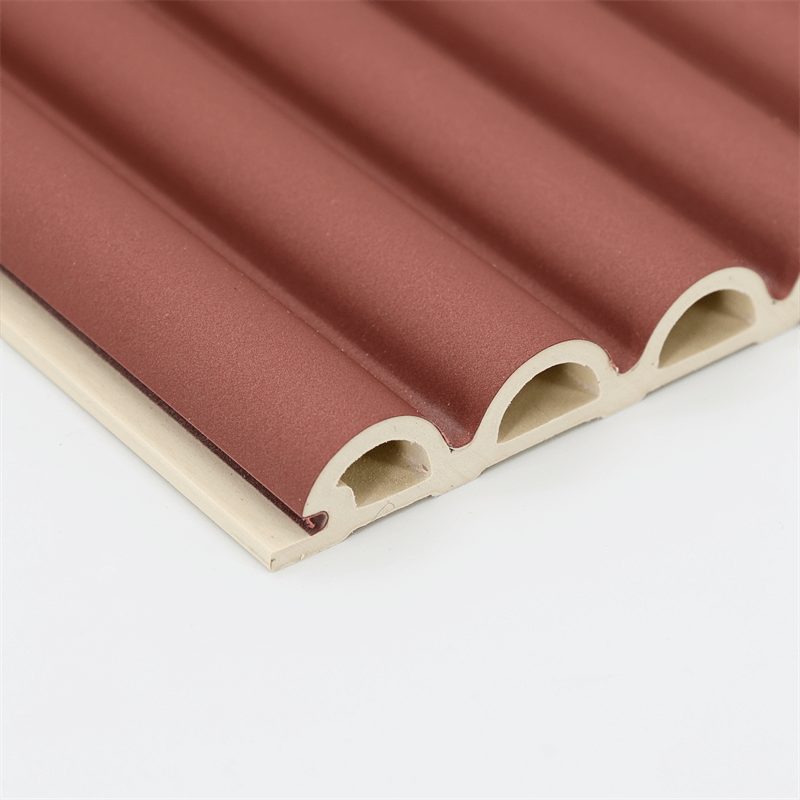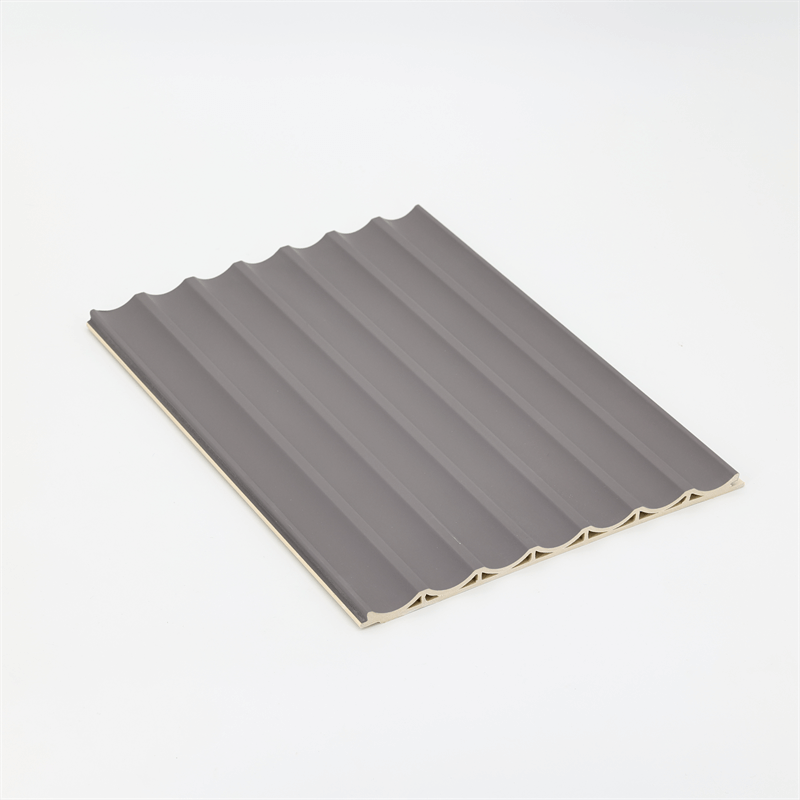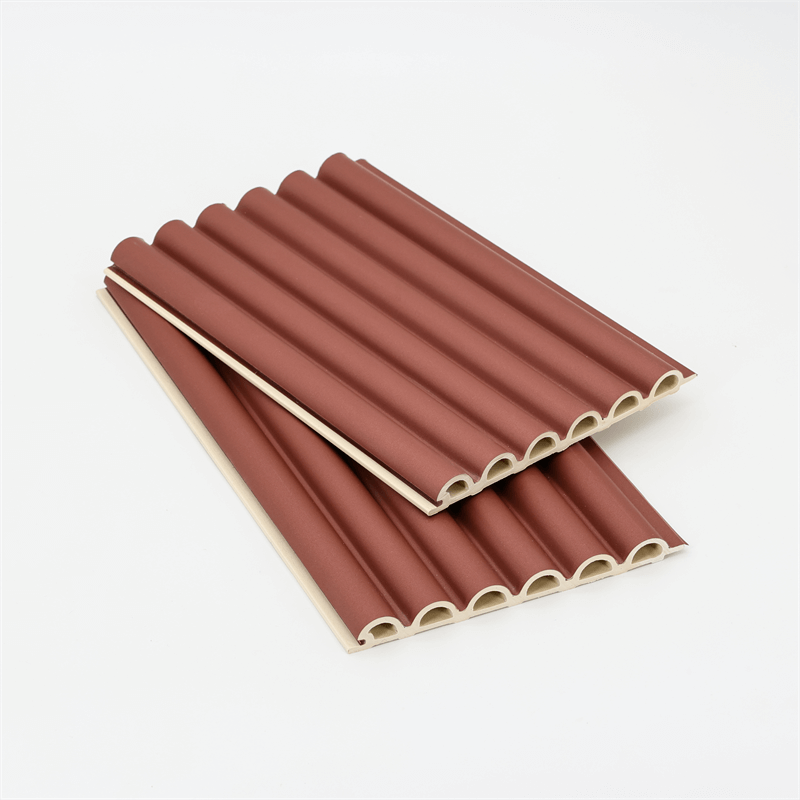The pursuit of sustainable design has become increasingly important in the world of architecture and interior design.
At the same time, aesthetics and style remain crucial considerations in creating visually appealing spaces.
WPC (Wood Plastic Composite) wall panels offer a unique solution by bridging the gap between style and sustainability.
This essay explores the fusion of style and sustainability in WPC wall panels, highlighting their aesthetic versatility, eco-friendly attributes,
innovative manufacturing processes, and their role in promoting sustainable design practices.
I. Aesthetic Versatility:
WPC wall panels are celebrated for their aesthetic versatility, allowing designers to create visually stunning spaces that align with various design themes and preferences.
These panels come in a wide array of colors, finishes, textures, and patterns, enabling customization to suit different interior styles.
Whether the desired look is contemporary, rustic, industrial, or traditional, WPC panels offer a range of options to achieve the desired aesthetic.
Moreover, WPC wall panels can mimic the appearance of natural wood, stone, or other materials while providing enhanced durability and sustainability.
With embossed textures and realistic grain patterns, WPC panels capture the essence of natural materials, adding depth and character to interior spaces.
The aesthetic versatility of WPC wall panels allows designers to unleash their creativity and bring their design visions to life without compromising on sustainability.
II. Eco-Friendly Attributes:
Sustainability lies at the core of WPC wall panels, making them an eco-friendly choice for conscious design practices.
These panels are composed of a blend of recycled wood fibers and high-quality polymers, minimizing the need for virgin timber and reducing waste.
By repurposing wood fibers and utilizing recycled materials, WPC panels contribute to the conservation of natural resources and the reduction of environmental impact.
Furthermore, WPC wall panels require less energy and water during manufacturing compared to traditional wall cladding materials.
The innovative manufacturing processes involved in creating WPC panels minimize the carbon footprint, making them a sustainable alternative.
The eco-friendly attributes of WPC panels align with the growing global emphasis on reducing environmental harm and promoting sustainable building practices.
III. Innovative Manufacturing Processes:
The production of WPC wall panels involves innovative manufacturing processes that optimize sustainability and performance.
These panels are created through a combination of extrusion and molding techniques, ensuring consistent quality and dimensional stability.
The manufacturing process involves blending recycled wood fibers with polymers, which are then subjected to high temperatures and pressure to form the final product.
The utilization of recycled materials and the absence of harmful chemicals or volatile organic compounds (VOCs) during the manufacturing process contribute to the eco-friendly nature of WPC panels.
The panels are also free from formaldehyde, a common concern in some traditional wall cladding materials.
By employing innovative manufacturing processes, WPC wall panels achieve a balance between style and sustainability, providing designers with a reliable and environmentally responsible option.
IV. Promoting Sustainable Design Practices:
WPC wall panels play a significant role in promoting sustainable design practices and green building certifications.
The use of eco-friendly materials and manufacturing processes aligns with the principles of sustainable design, such as reducing waste, conserving energy, and preserving natural resources.
By incorporating WPC panels into architectural and interior design projects,
professionals can contribute to meeting sustainability goals and obtaining certifications like LEED (Leadership in Energy and Environmental Design).
Additionally, WPC wall panels offer opportunities for sustainable renovations and adaptive reuse projects.
These panels can be installed directly over existing walls, eliminating the need for demolition and reducing waste.
They provide a fresh and stylish appearance to spaces while minimizing the environmental impact of the renovation process.
Moreover, the durability and long lifespan of WPC panels reduce the need for frequent replacements, minimizing the generation of construction waste over time.
Their resistance to environmental factors, such as moisture and UV radiation, ensures that the panels maintain their aesthetic appeal and structural integrity for an extended period.
The promotion of sustainable design practices through the use of WPC wall panels demonstrates a commitment to creating environmentally responsible and future-proofed spaces.

WPC wall panels offer a harmonious blend of style and sustainability, providing designers and architects with a versatile and eco-friendly option for interior spaces.
The aesthetic versatility of these panels allows for creative expression while meeting sustainable design objectives.
The eco-friendly attributes and innovative manufacturing processes of WPC panels ensure that they contribute to sustainable building practices and green certifications.
By choosing WPC wall panels, professionals in the field of architecture and interior design can bridge the gap between style and sustainability.
These panels offer a visually appealing solution that aligns with eco-conscious principles, promoting the creation of beautiful and sustainable spaces.
WPC wall panels pave the way for a more sustainable future, where style and environmental responsibility go hand in hand in the realm of design.
Additionally, the use of WPC wall panels can have positive implications for indoor air quality.
Unlike some traditional wall cladding materials, WPC panels do not emit harmful volatile organic compounds (VOCs) or formaldehyde, which can have detrimental effects on human health.
This aspect of WPC panels makes them a safe and healthy choice for interior spaces, particularly in environments where air quality is a concern, such as homes, schools, or healthcare facilities.
Furthermore, WPC wall panels contribute to the reduction of deforestation and the preservation of forests.
By utilizing recycled wood fibers and minimizing the reliance on virgin timber, WPC panels help to minimize the demand for logging and the destruction of natural habitats.
This sustainable approach supports the conservation of biodiversity and the maintenance of ecological balance, contributing to a greener and more sustainable planet.
The longevity and durability of WPC wall panels also contribute to their sustainable nature.
The panels are designed to withstand the test of time, requiring minimal maintenance and reducing the need for frequent replacements.
This durability not only reduces waste but also minimizes the consumption of resources and energy associated with the production and disposal of new materials.
The long lifespan of WPC panels makes them a sustainable investment that can withstand changing design trends and offer lasting value.

In addition to their environmental benefits, WPC wall panels also offer economic advantages.
The initial investment in WPC panels may be higher than some traditional cladding materials, but the long-term cost savings outweigh the upfront expenses.
With their low maintenance requirements and extended lifespan, WPC panels result in reduced maintenance and replacement costs over time.
The energy efficiency properties of WPC panels can also lead to savings on heating and cooling expenses.
Moreover, the incorporation of WPC wall panels in interior spaces can enhance the overall value of a property.
The stylish and sustainable appeal of WPC panels adds a unique selling point to residential and commercial spaces, making them more attractive to potential buyers or tenants.
Properties that prioritize sustainability and offer visually appealing design features often command higher market values, providing a return on investment in WPC panels.
In conclusion, WPC wall panels offer a compelling combination of style and sustainability.
Their aesthetic versatility, eco-friendly attributes, innovative manufacturing processes,
and contribution to sustainable design practices make them a preferred choice for conscious architects, designers, and property owners.
By choosing WPC panels, professionals can bridge the gap between style and sustainability, creating visually stunning spaces while promoting eco-consciousness and reducing environmental impact.
WPC wall panels are a testament to the fact that sustainable design can be both visually appealing and environmentally responsible,
offering a promising future for the fusion of style and sustainability in the construction and design industry.

